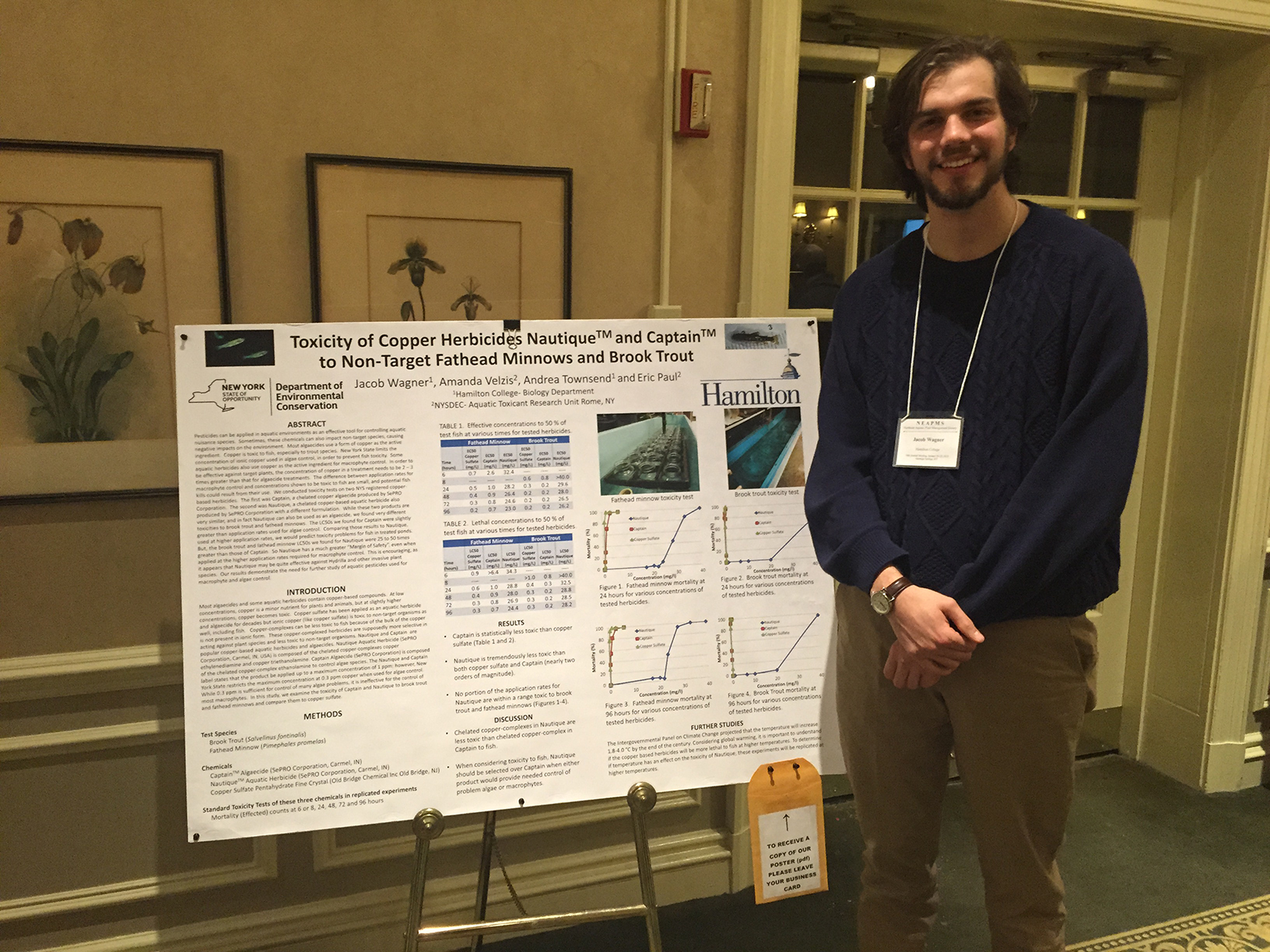
Jacob Wagner ’15 presented a poster on his thesis work about the effects of copper herbicides on non-target fish at the annual conference of the Northeast Aquatic Plant Management Society, held Jan. 20-22 in Saratoga Springs, N.Y. Wagner is a biology major.
Wagner’s abstract read: “Pesticides can be applied in aquatic environments as an effective tool for controlling aquatic nuisance species. Sometimes, these chemicals can also impact non-target species, causing negative impacts on the environment. Most algaecides use a form of copper as the active ingredient. Copper is toxic to fish, especially to trout species. New York State limits the concentration of ionic copper used in algae control, in order to prevent fish toxicity. Some aquatic herbicides also use copper as the active ingredient for macrophyte control. In order to be effective against target plants, the concentration of copper in a treatment needs to be 2 – 3 times greater than that for algaecide treatments. The difference between application rates for macrophyte control and concentrations shown to be toxic to fish are small, and potential fish kills could result from their use. We conducted toxicity tests on two NYS registered copper-based herbicides. The first was Captain, a chelated copper algaecide produced by SEPRO Corporation. The second was Nautique, a chelated copper-based aquatic herbicide also produced by SEPRO Corporation with a different formulation. While these two products are very similar, and in fact Nautique can also be used as an algaecide, we found very different toxicities to brook trout and fathead minnows. The LC50s we found for Captain were slightly greater than application rates used for algae control. Comparing those results to Nautique, used at higher application rates, we would predict toxicity problems for fish in treated ponds. But, the brook trout and fathead minnow LC50s we found for Nautique were 25 to 50 times greater than those of Captain. So Nautique has a much greater 'Margin of Safety,' even when applied at the higher application rates required for macrophyte control. This is encouraging, as it appears that Nautique may be quite effective against Hydrilla and other invasive plant species. Our results demonstrate the need for further study of aquatic pesticides used for macrophyte and algae control.”
